Water Contamination Goes Under the Microscope
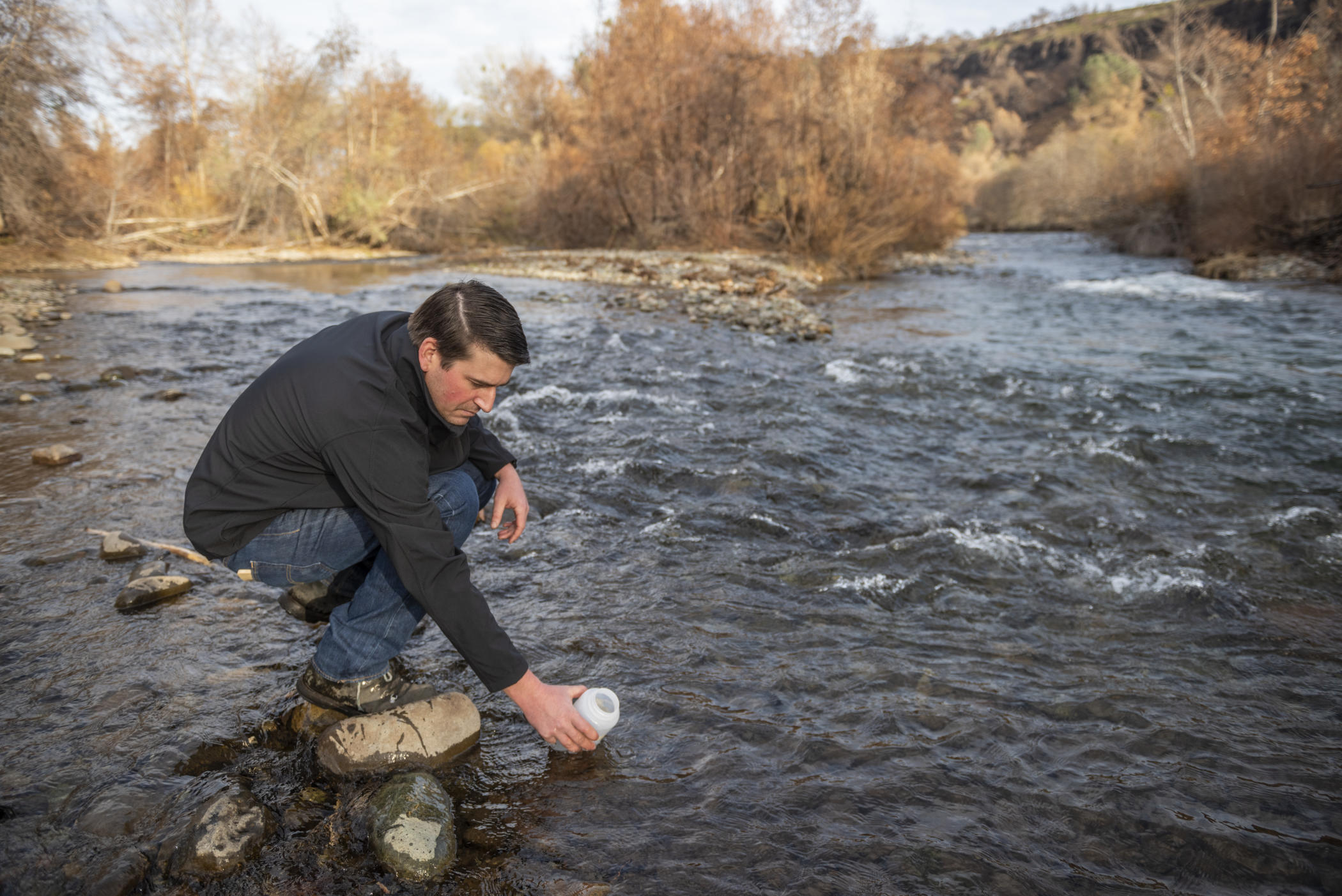
Editor’s Note: As we approach the one-year anniversary of the Camp Fire, we are honoring its impact on our community with a series of stories embracing the themes of remembrance, recovery, and resurgence.
As recovery from the Camp Fire’s destruction continues, a far less visible but critical consequence continues percolating into awareness.
A team of Chico State faculty and student researchers is examining the magnitude of water contamination that resulted from the blaze, as well as the possible public health and environmental implications for urban and environmental users in Butte County and beyond. With more than 14,000 structures lost to the fire, as well as hundreds of businesses, thousands of cars, and widespread infrastructure, the implication for impacts is significant.
“We started asking ourselves: ‘What contaminants exist up here, and are they moving around and mobilizing into the surrounding watershed? What does that mean for the community?’” said civil engineering professor Jackson Webster, who partnered with geological and environmental sciences professor Sandrine Matiasek and a team of students to lead this project.
The fire’s location and timing posed an obvious problem. Waterways in the burn scar area feed into Butte Creek and Little Chico Creek, which wind through Chico and the surrounding communities, as well as the western branch of the North Fork of the Feather River, which feeds Lake Oroville. That reservoir is the largest water body in the State Water Project and supplies water to millions of agricultural, business, and urban users across California.
With rain imminent before cleanup would even begin, the researchers knew contamination from the fire would inevitably wash into the surrounding waterways. Sampling began right away and close to home.
“You have an urban fire, high in the watershed, with millions of people downstream depending on water for drinking and flowing through the Sacramento Valley and Bay-Delta ecosystem,” said Webster, who has studied wildfire’s effect on the environment for most of his career. “I don’t think anything like this has happened before.”
What’s in the water?
The professors, who currently co-direct the University’s Center for Water and the Environment, quickly secured an $80,000 emergency response National Science Foundation grant, which included $30,000 to pay for students to work on the project.
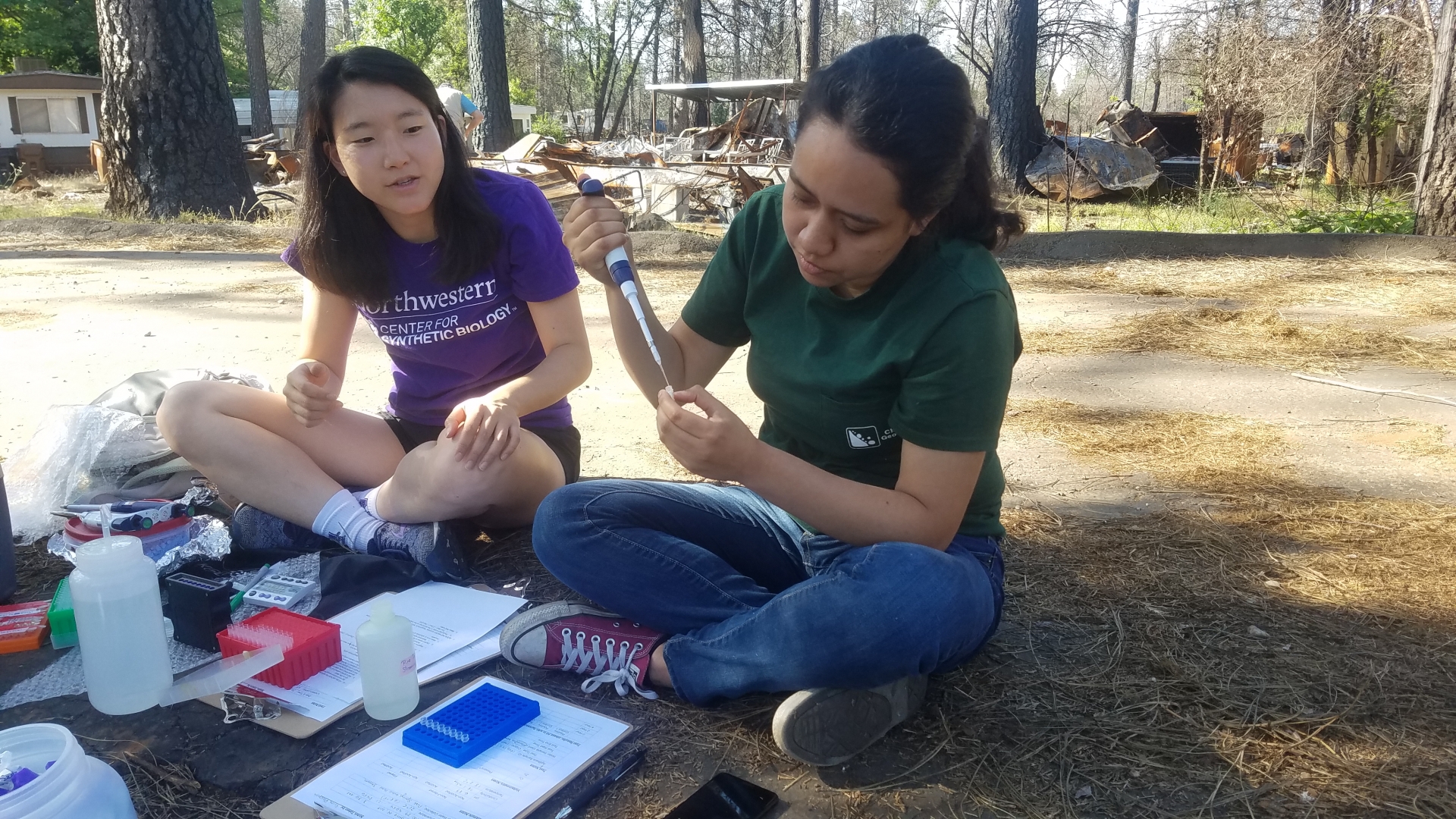
“Nine students have been involved since Day 1,” said Matiasek, who studies the composition of water as it interacts with the environment. “We were sampling as the fire was still going, with very poor air quality, wearing masks. It was a very unique experience.”
Over the course of the winter, the team sampled base flows in eight locations in the foothills, deploying instruments to determine creek flows, collecting and transporting water samples to campus labs, then processing the samples and filtering and preserving different sub-samples for analysis, Matiasek said.
Some samples were examined on campus using the University’s instruments, including its newly acquired inductively coupled plasma mass spectrometer used for measuring metals. Others have been sent to collaborators at other universities, including the University of North Carolina at Greensboro; Clemson University; the University of Colorado, Boulder; and the University of Washington. The United States Geological Survey (USGS) has been involved as well.
In all, the team collected 150 samples, capturing each rain event and sampling multiple times per storm in each waterway. The samples were analyzed for dissolved total metals, nutrients, mercury, organic carbon, pharmaceuticals, pesticides, and fluorine, among other contaminants.
Fortunately, the initial findings show that while contamination was certainly present, the levels were not alarmingly high.
“We see the effects of the fire and contaminants, but not beyond levels you’d typically see in urban watersheds,” Webster said, with the caveat that no prior data in the area exists for comparison. “I do think what we’re seeing comes from tires, vehicle compounds, businesses, and homes, with the fire releasing them into the environment.”
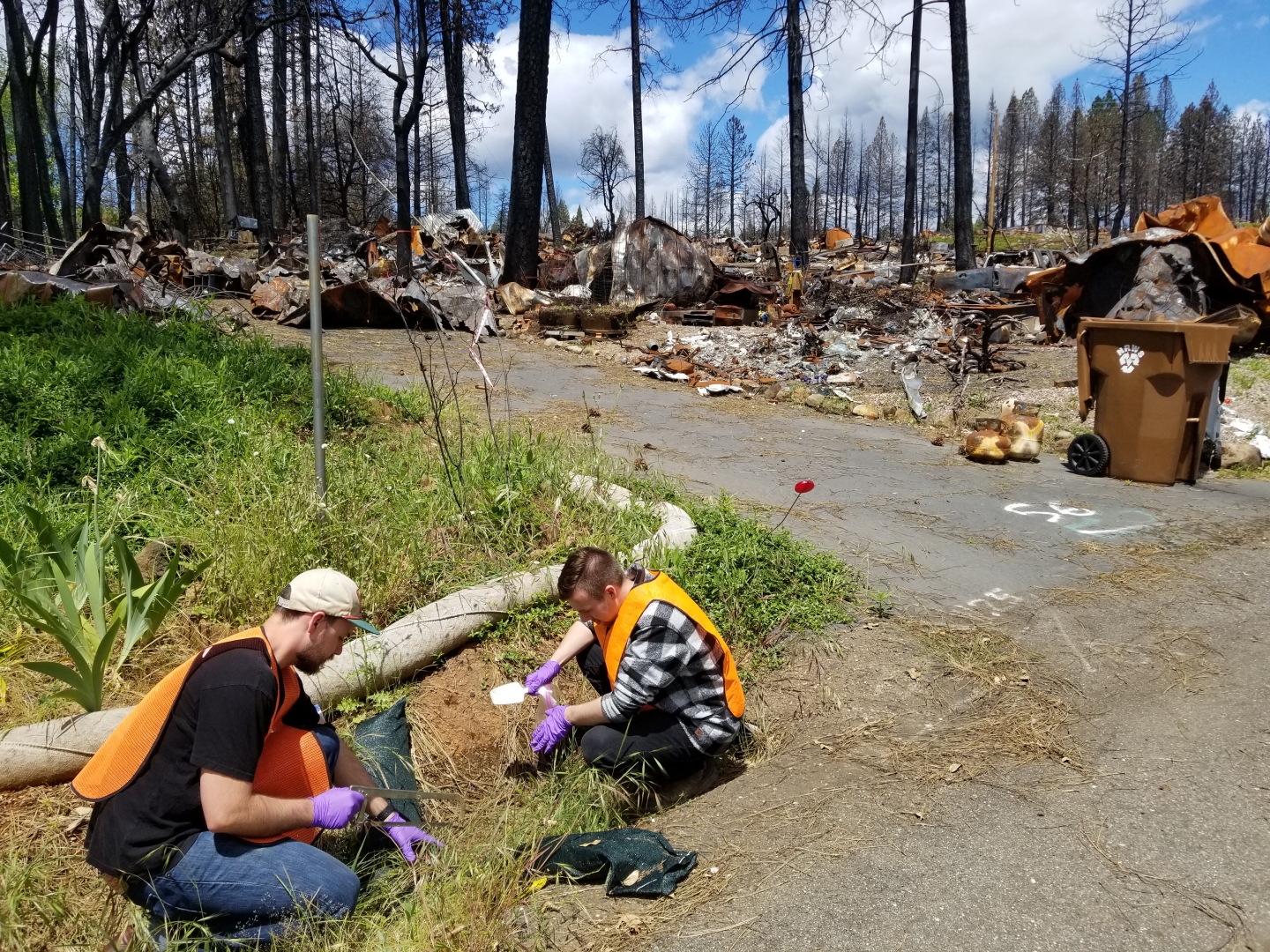
The professors say it’s possible that carbon found in the water could have absorbed even more contaminants. They are conducting further testing and hope to get those results soon.
In May, as the weather cleared and cleanup efforts began in earnest, the team noticed a sharp uptick in construction-related compounds—dust, material from trucks, truck traffic, tires, asphalt, oil, and grease—and affirmed the largest cleanup effort in state history would have its own massive effects in the watershed.
Collaboration is key
Cross-departmental collaboration and student involvement have been critical to the project’s success, Matiasek said. Throughout the entire sample analysis process, the civil engineering and geological and environmental sciences departments have shared instruments, knowledge, and results, increasing efficiency and productivity, she said.
“The ease of sharing equipment and capabilities is one of the University’s greatest strengths,” she said, adding that students also benefit by gaining interdisciplinary research experience that prepares them well for future careers and graduate school.
Student researcher Erica Plasencia is a fourth-year civil engineering major who is focusing her studies on water quality. Through this project she has learned how to conduct complicated scientific processes, such as ion chromatography, as well as sampling protocols and techniques.
“The first day I went sampling, it was raining, so we were wearing raincoats and gloves, and I learned proper sampling procedures in the field, which is not a closed environment like the lab,” she said.
For example, when taking samples from a creek, she said, it’s important to take water from midstream instead of near shore so you get a representative sample. Immediately putting samples on ice and processing them shortly after is also critical to maintaining integrity.
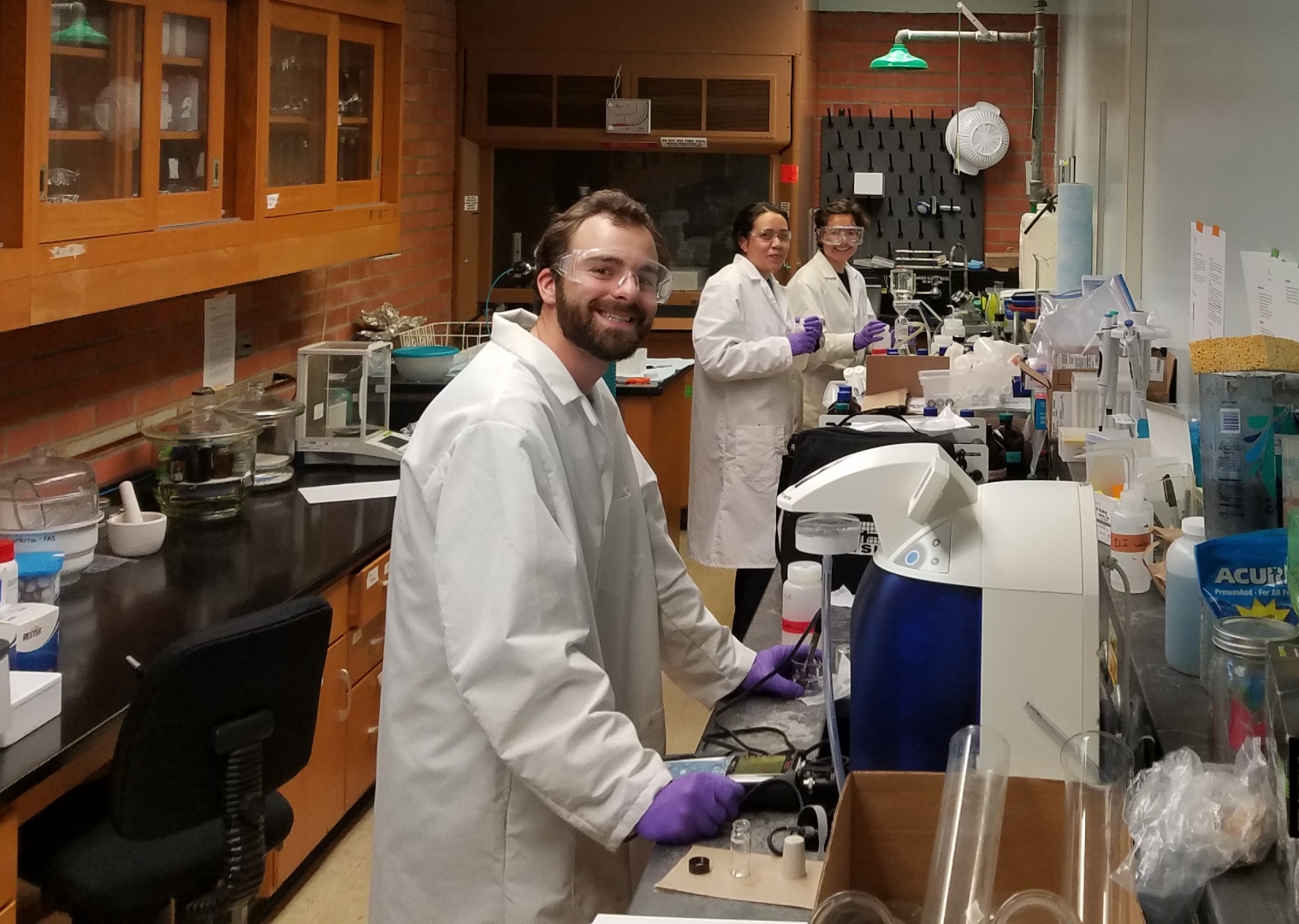
The opportunity to work closely alongside Webster and gain these sampling, instrument, and lab skills directly influenced Plasencia’s recent decision to pursue a graduate degree, she said.
“Before starting this research, I wasn’t considering grad school because I didn’t have an idea of what I was interested in,” she said. “Then the fire happened and I’ve had two perspectives. I’m looking at the effects in terms of science and the environment, and I’m also looking at the effect it’s had on the social aspect and our community. And I’ve seen how those two things are connected—as the environment continues to impact the community.”
Another student researcher, biology major Gabrielle Wyatt, was one of two team members who lost her home and all her possessions in the fire. Forced to move into a hotel room for the remainder of the academic year, Wyatt staunchly carried on with the watershed work and her own research project at Butte College’s bioswale filtration system, missing only the classes that were canceled due to the fire.
Besides an interest in the topic and a desire to help the community, she said she now realizes she used the research to help cope with the magnitude of the tragedy.
“It made me feel like I was doing something to make the situation better; it gave me something to focus on,” she said.
And she fell in love with research. On track to graduate in spring 2020, she has dreams of attending graduate school and becoming a science professor.
Today, Webster and Matiasek are in the process of applying for longer-term funding to continue studying the Butte County foothills watershed in the coming years. After they presented their work at the 2019 Camp Fire Research Symposium in June, they hope to continue sampling through the winter and spring.
Another component of the team’s work includes looking at the efficacy of wattles, or barriers used to help protect waterways from runoff, which were placed around the burn zone en masse after the fire. A large and diverse group of local, state, and federal agencies and nonprofits, including the Chico State research team, met regularly over the last year to assess whether the wattles were effective and determine how to better use them in future events.
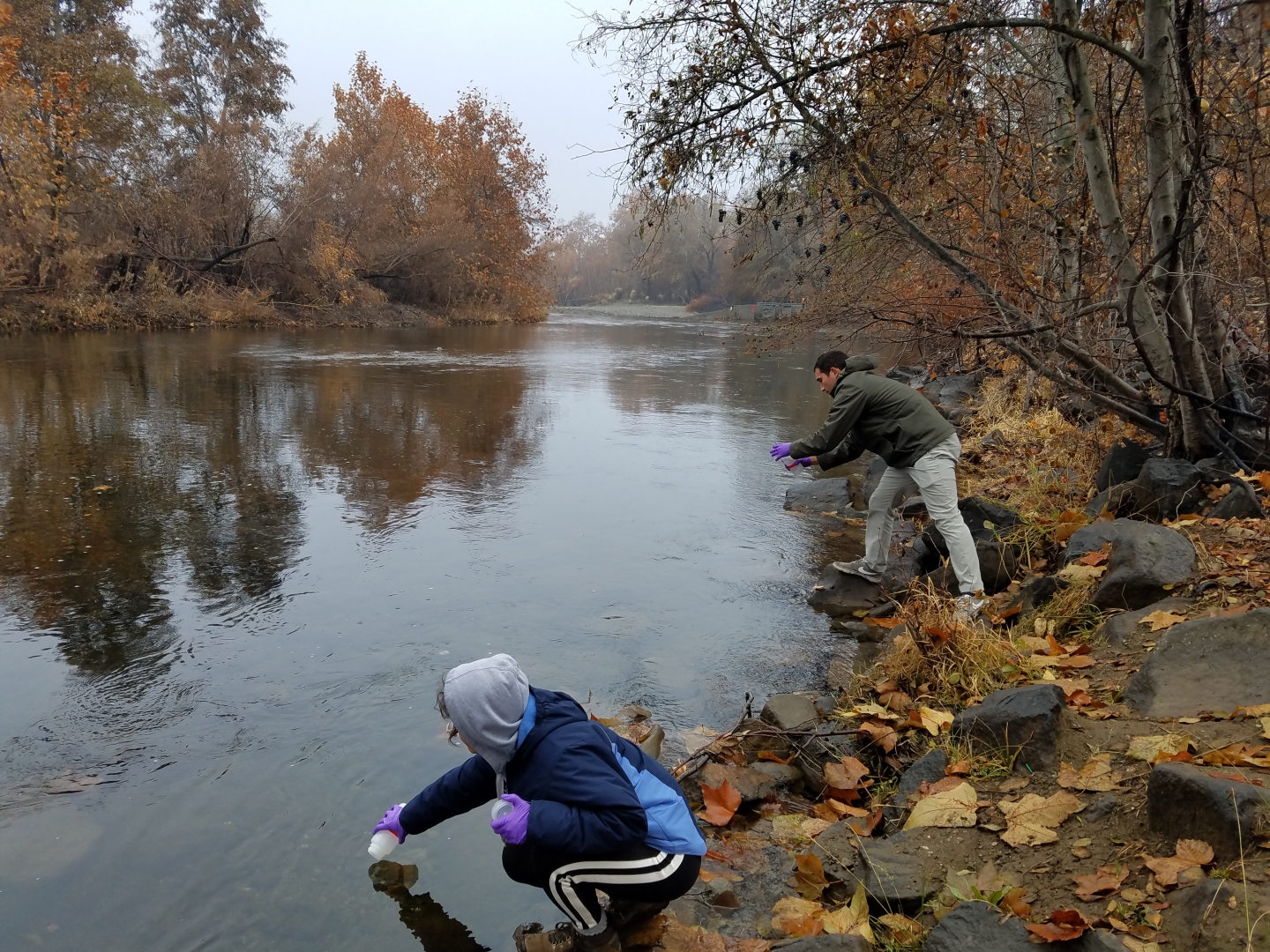
It makes sense, Webster said, to use the Camp Fire tragedy as an unexpected opportunity to support student success and build greater understanding of wildfires through unusual hands-on field research.
“There are always opportunities to do research, but this was right in our backyard,” he said. “It allowed students to see the issues firsthand, participate in a meaningful way close to campus, and be involved in high-level research with a large amount of sampling.
“There are no easy answers to all of this; these are difficult and complicated issues that can’t be solved in a semester or even a year,” he continued. “It’s totally the real world; we’ve gained a lot of resources through these grants. There are definitely more opportunities for our students as a result.”


